You want to spice up your animations in Cinema 4D and get to know the Volume-Effector? With this tool, you can influence clones specifically within a defined volume. In this guide, we will show you step by step how to set up and animate this effector so that your clones react to political objects.
Main Insights
- The Volume-Effector influences clones based on their position within a defined volume.
- Animating objects in the volume can create dynamic effects.
- The Volume-Effector is best suited for complex and moving objects.
Step-by-Step Guide
Start by opening Cinema 4D and creating a new project. Here, you will set up the Volume-Effector and animate your clones.
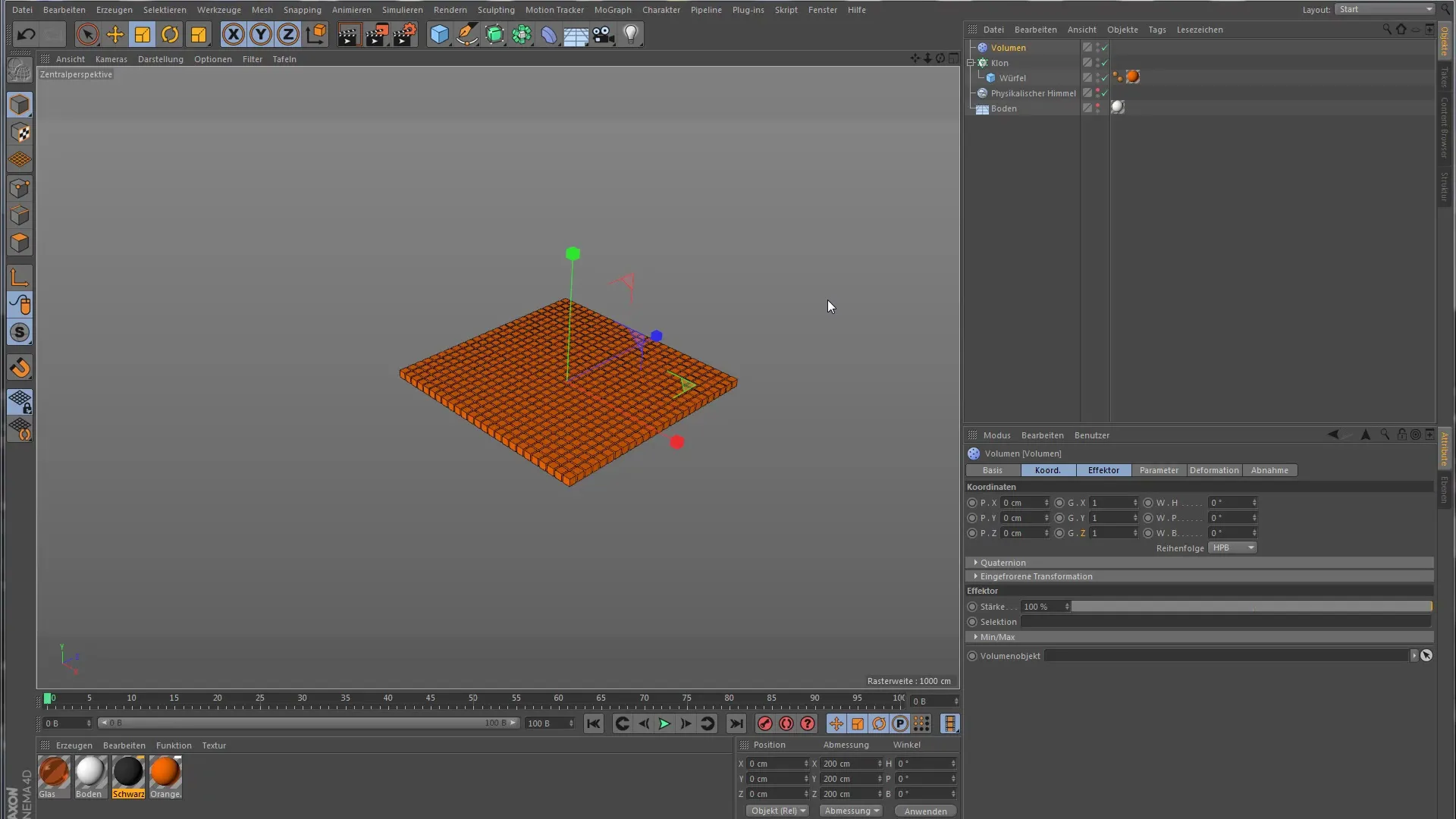
Create a new primitive object that serves as a volume. In our example, we use a ring. You can adjust the size of the ring to set the volume according to your needs.
Once your ring is placed, go to the effector objects and select the Volume-Effector. Set the ring as your volume object so that the effector can influence the clones within the geometry of the ring.
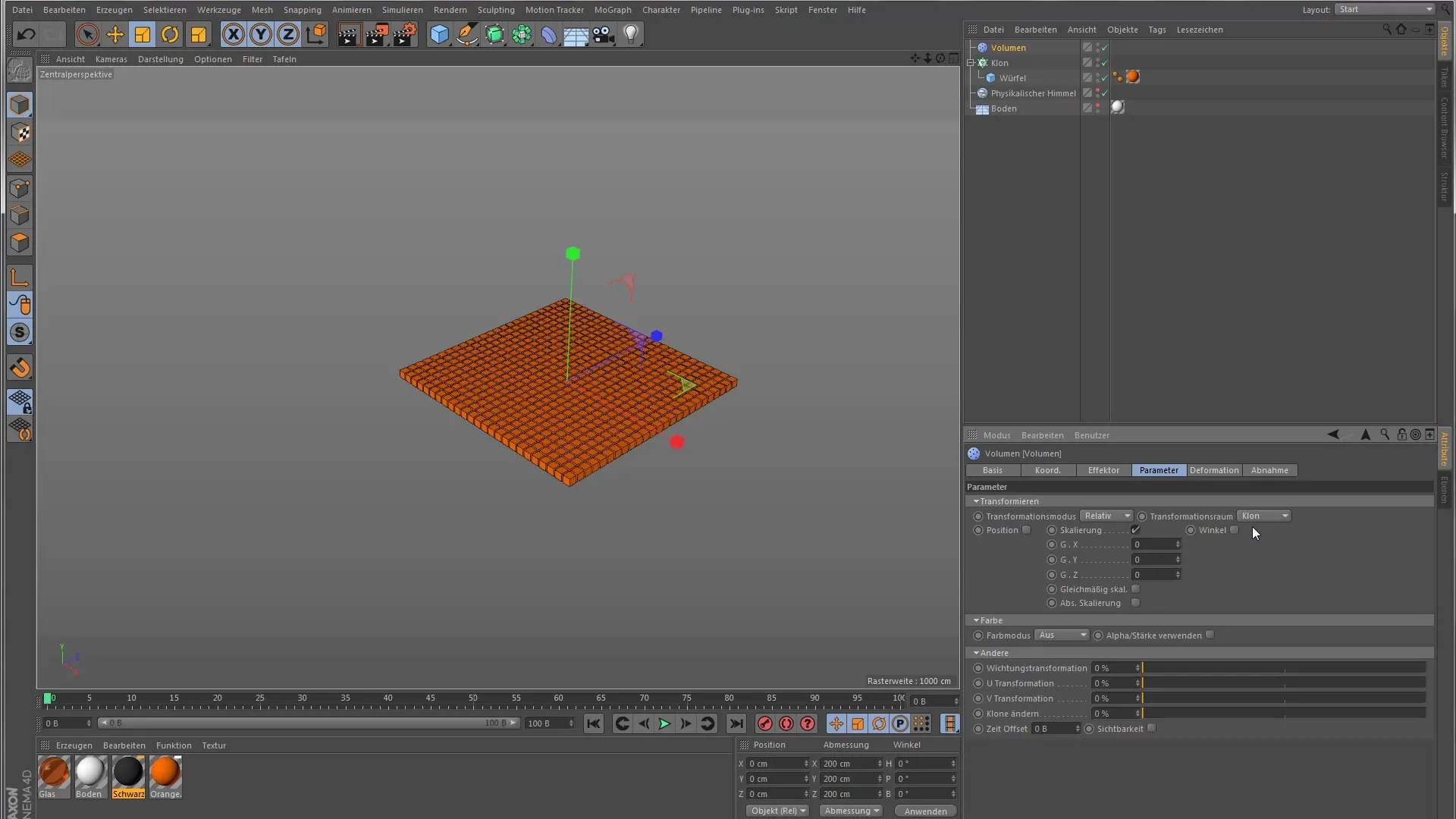
Now you need to adjust the Volume-Effector. Go to the effector's parameters and set the scaling value to a higher value (for example in the Y range) to make the effect visible.
To see the effect of the effector, you can enable the animation. First, you should make the ring a little smaller so that it does not have an immediate influence. Now convert the ring into a polygon object to enable the animation.
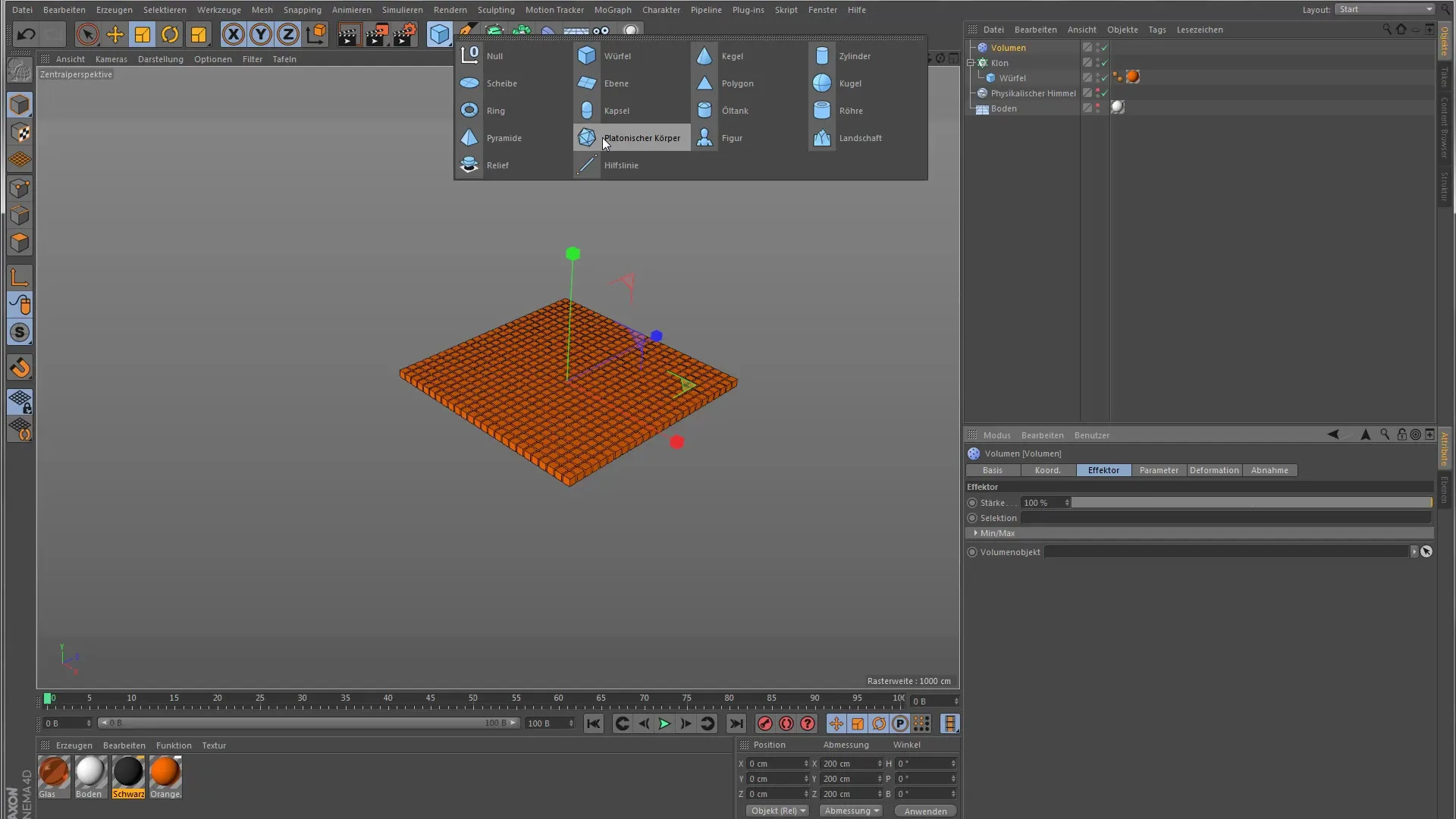
Set keyframes for the animation of the ring. Click at the desired point in the timeline and set the starting value. Go to the last point of the animation and increase the value for the ring, for example to 60.
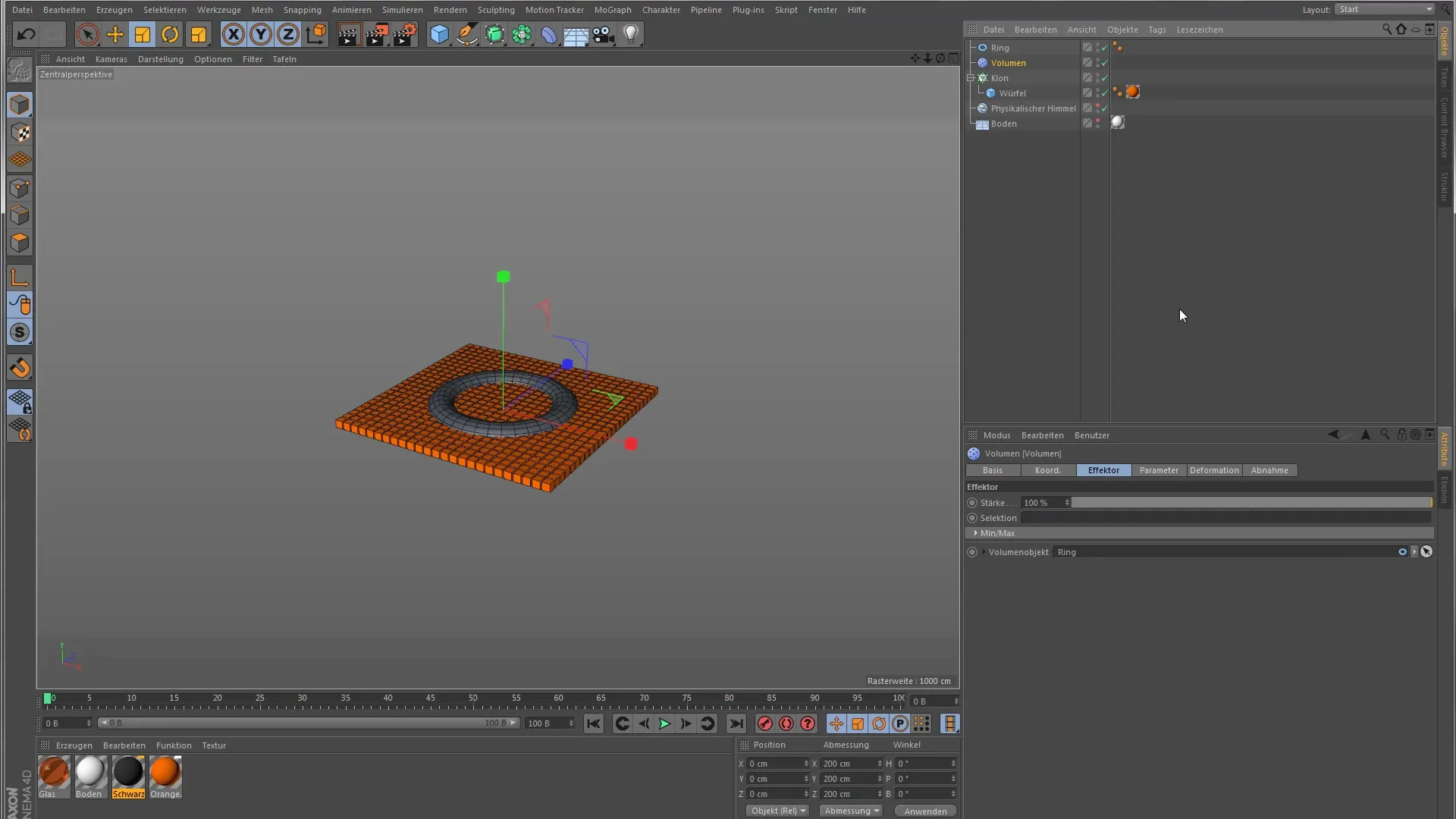
Don’t forget to coordinate the keyframes. Make sure that the animation flows as you expected. Typically, you choose numerical values that create an impressive animation of the clones in the volume.
When the animation runs now, you will see how the clones respond to the movement of the ring by growing and shrinking, depending on whether they are inside the volume or not.
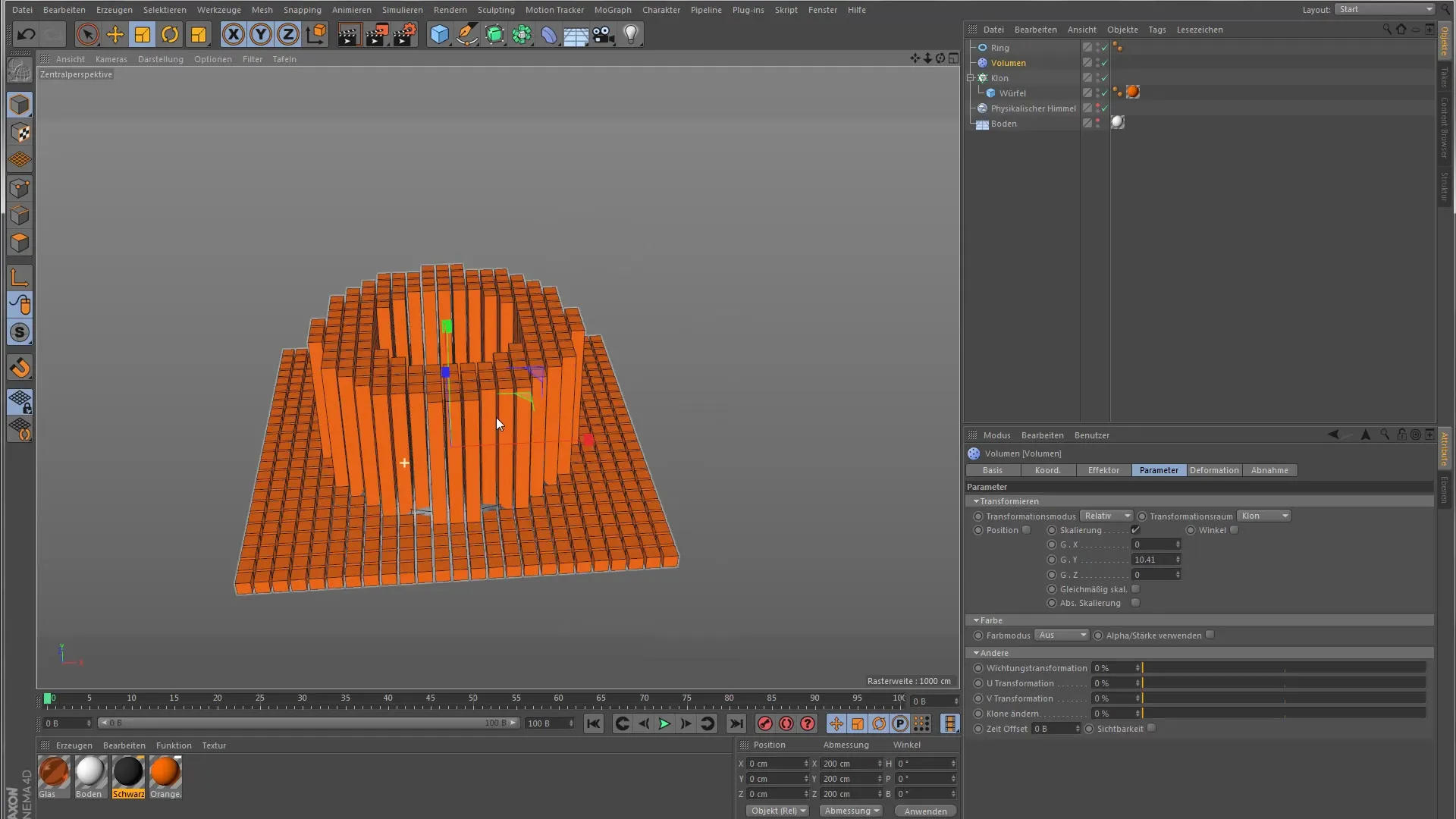
To remove the ring from the view in the final rendering, you can disable the visibility of the ring. To do this, go to the visibility options and disable the option so that the ring is no longer visible in the viewport.
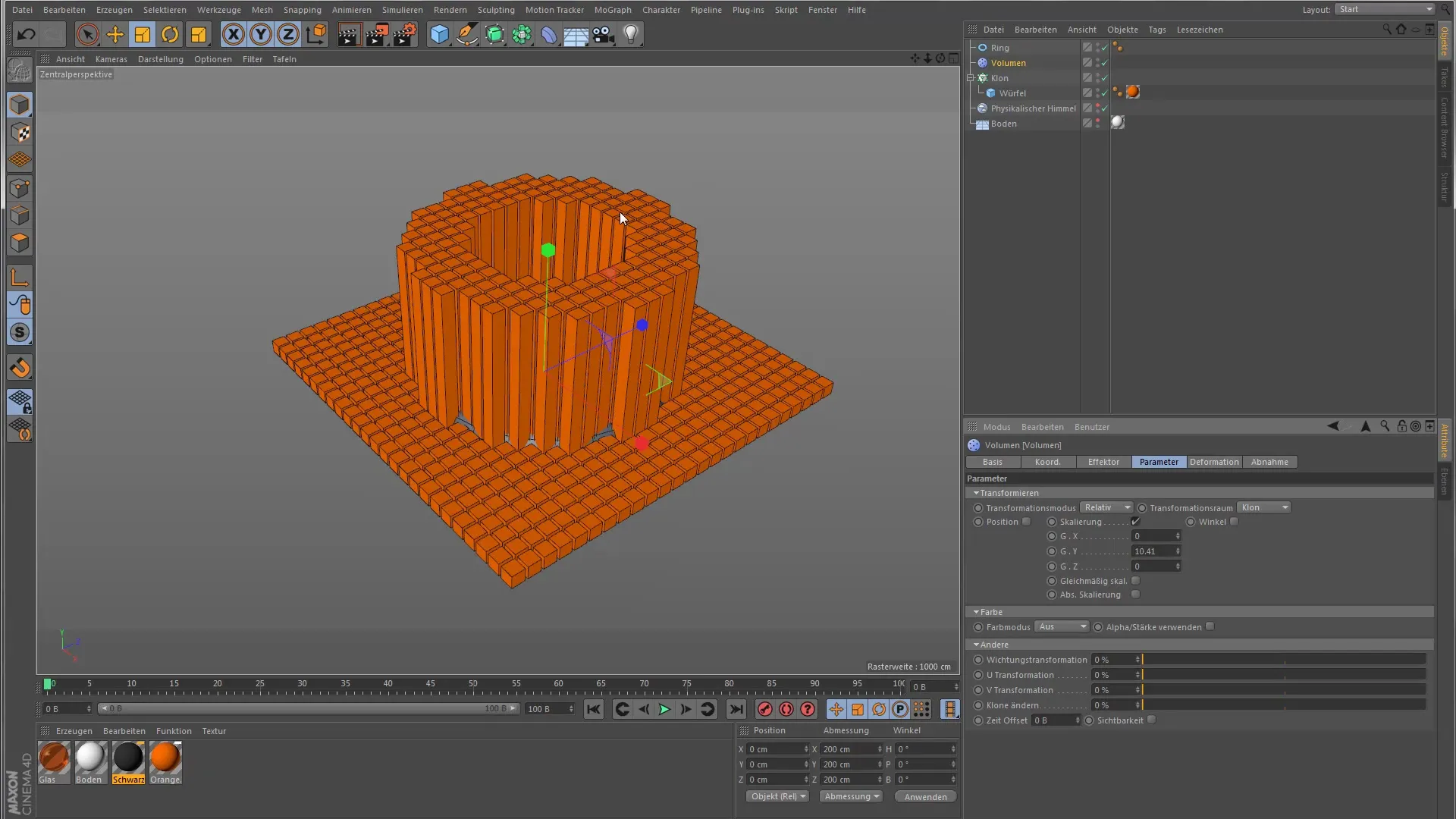
Alternatively, you can also create a render tag to hide the ring in the final render. Make sure you configure the tag correctly so that the ring is not visible during rendering.
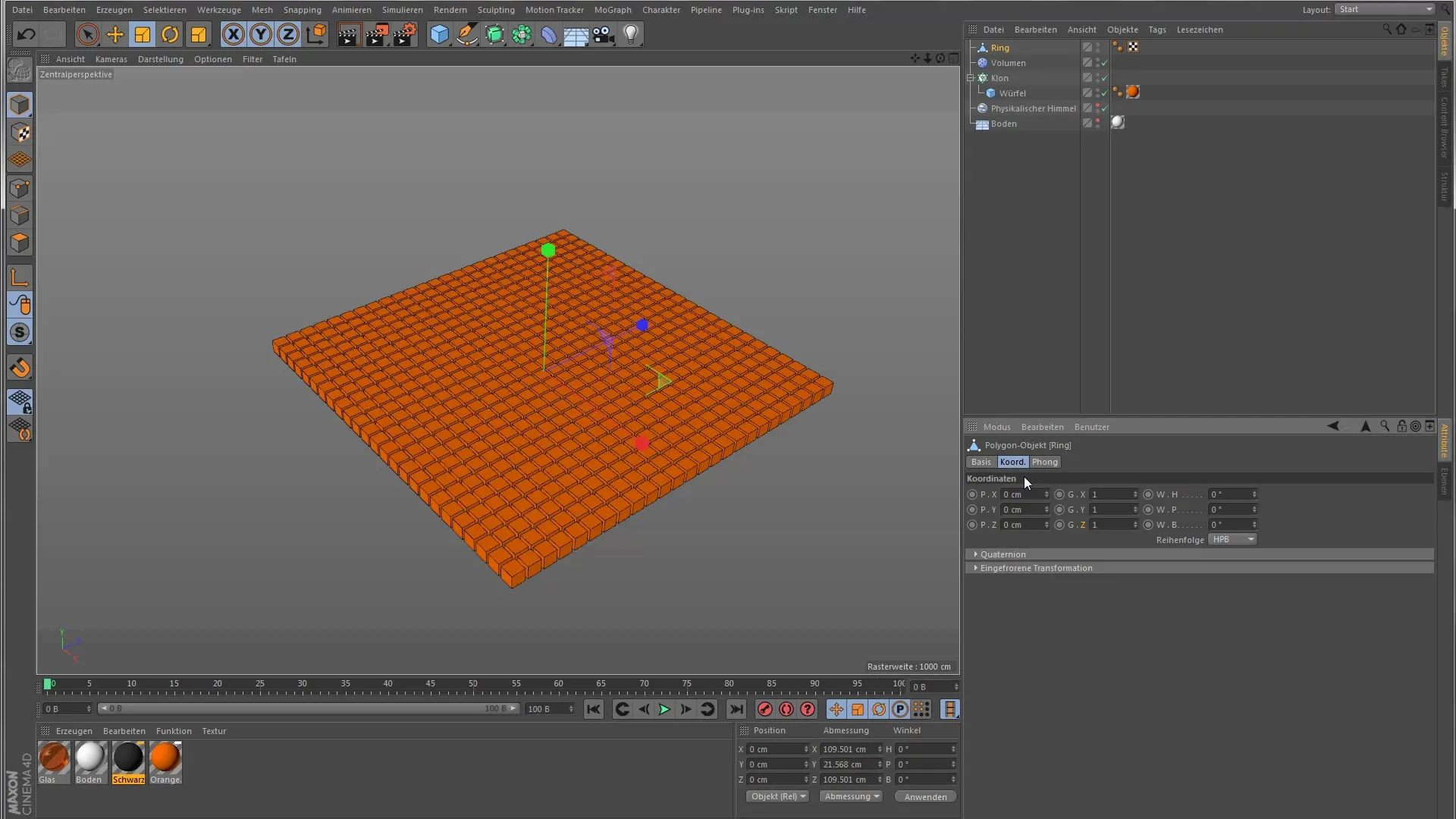
However, if you are working with simple objects, you can also use the Simple Effector to simulate the volume. In such cases, the Volume-Effector is not necessary, and the Simple Effector is sufficient.
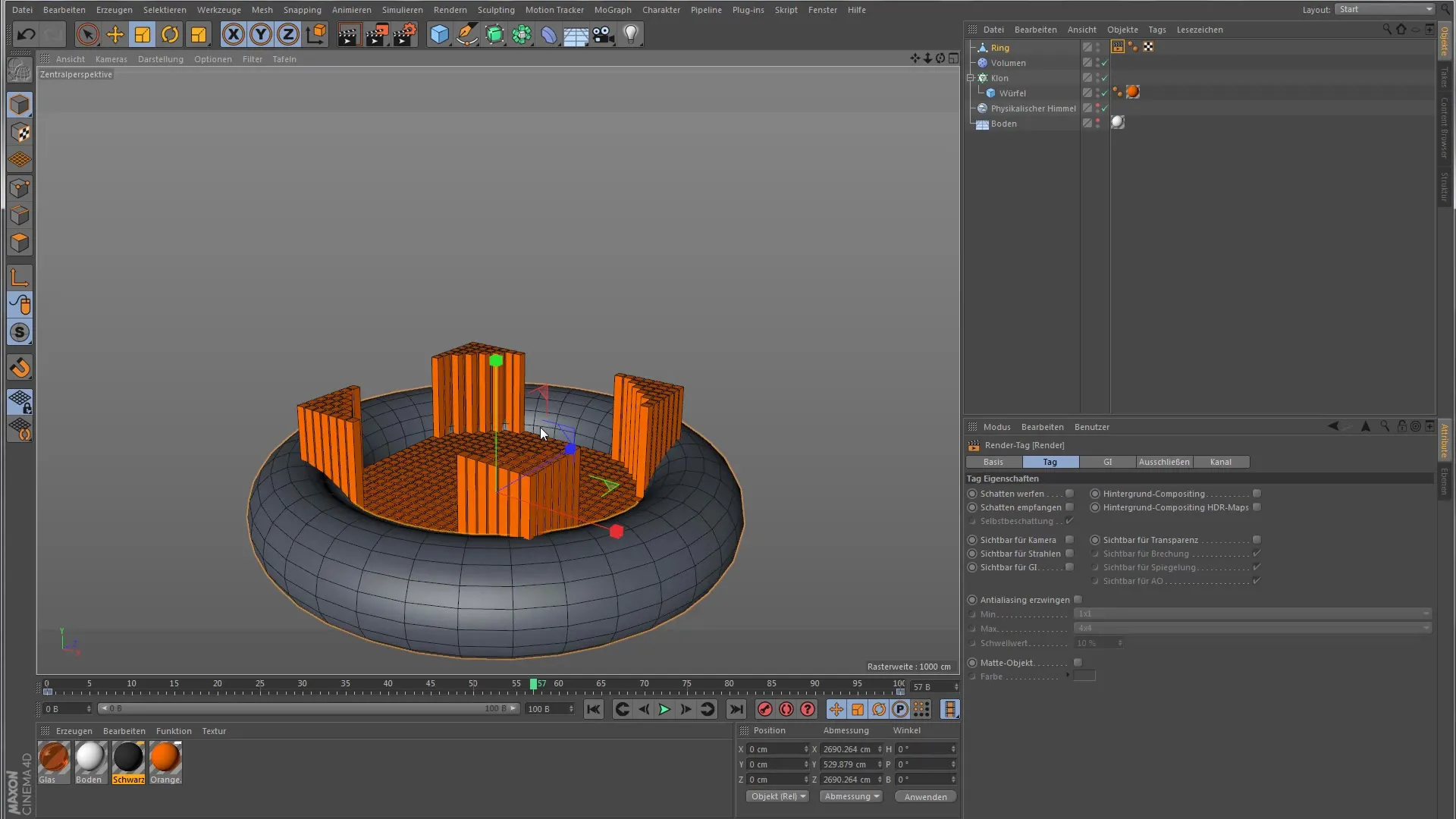
Now you have learned the basics of the Volume-Effector. This effector is particularly useful in more complex scenarios, especially when you have moving objects that exert influence on clones.
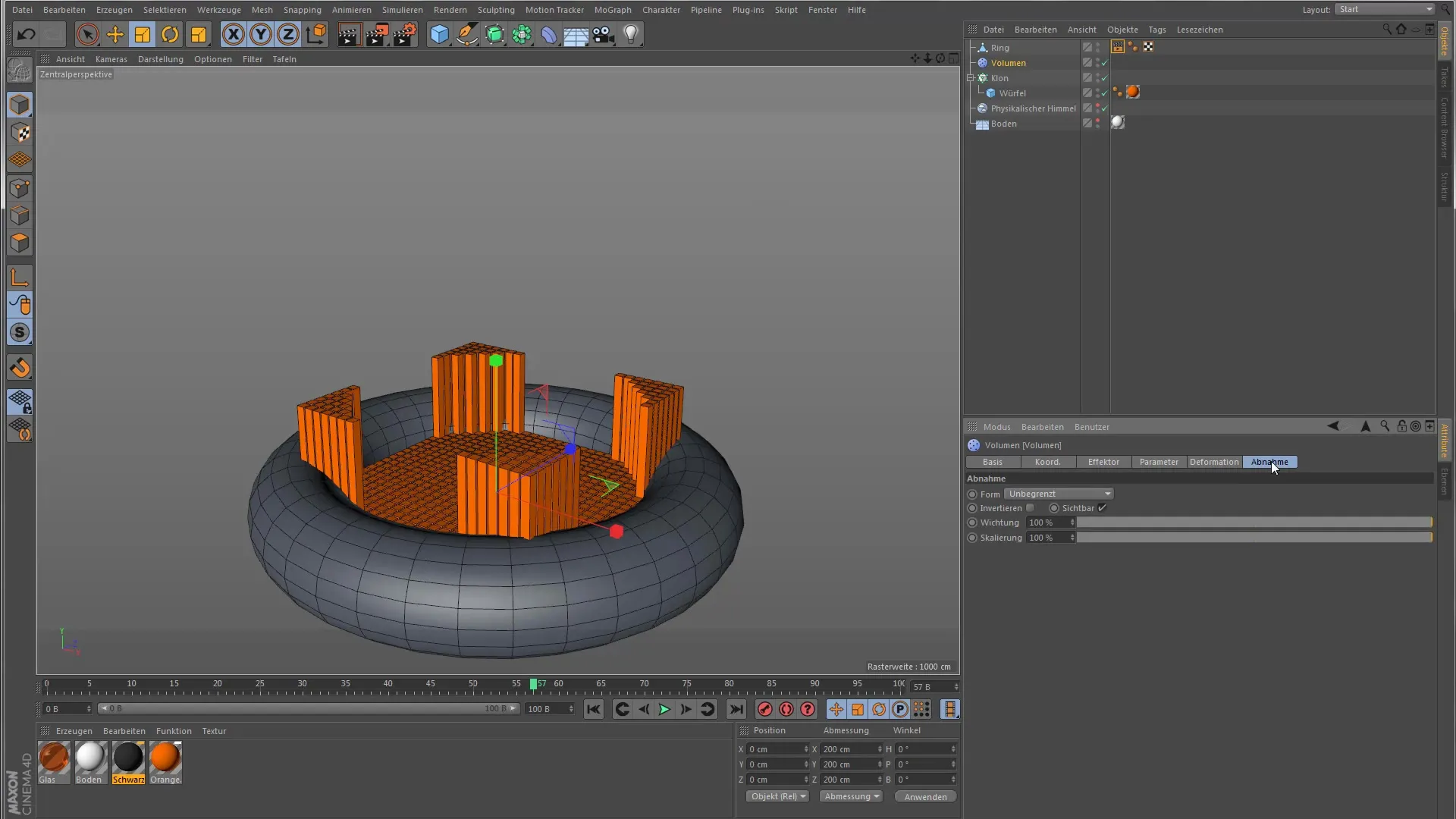
Summary – Effectively Using the Volume-Effector in Cinema 4D for Animations
You should now have a good understanding of how the Volume-Effector works and how you can use it for your own animations. Remember that this effect is especially significant when dealing with more complex movements of objects, such as vehicles or characters.
Frequently Asked Questions
How do I define the volume for the effector?You can use a primitive object, such as a ring, and set it as a volume object in the effector.
What can I do if I don't want to see the ring in the render?You can disable the visibility of the ring in the viewport or use a render tag to remove it from the final render.
When is it reasonable to use the Volume-Effector?The Volume-Effector is reasonable when you have complex moving objects that should influence your clones.


